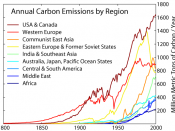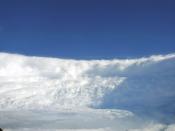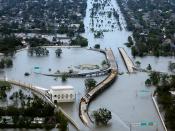Hurricane Katrina and Global Warming
At the end of August, 2005, in the Atlantic Ocean the next hurricane, named by meteorologists "Katrina," was born. Hurricane Katrina passed through Florida, leaving one million people for several days without electricity, then moved to the Gulf of Mexico. On August 29, Katrina went north and hit Louisiana, Alabama, Mississippi and Tennessee. Experts called Hurricane Katrina - the most destructive natural disaster in United States history (Wkipedia, 2005).
Every hurricane represents an atmospheric whirlwind, which in the case of Katrina reached in diameter up to 215 miles with the wind speed in the epicenter being 155mi/h. The wave height in the Gulf of Mexico, in a zone where Katrina passed, reached 28 feet. Passing through areas of petrocrafts, hurricane Katrina damaged many chisel platforms causing an 80% decrease in oil recovery. In a disaster zone, about 90% of the apartment houses had been destroyed.
But the most damage hurricane Katrina caused was in the city of New Orleans. Seventy percent of the city's territory lay below sea level, and was protected from flooding by dams. When hurricane Katrina damaged dams, 80 % of the city got flooded. Some buildings have fallen down as a result of the joint influence of wind and water (Wikipedia 2005).
Before the impact of the disaster, 400 thousand people were evacuated and 100 thousand decided to stay in their homes. When the hurricane ceased, government officials reported that 234 people got killed; 71 of them in New Orleans. Some people have been asking the question: "Does global warming have anything to do with that?"
In the article "What Part of "Global Warming" Do We Not Get?" Bill McKibben, an environmentalist and writer of several books on global warming, writes that human activity speeding up the process of global warming.


